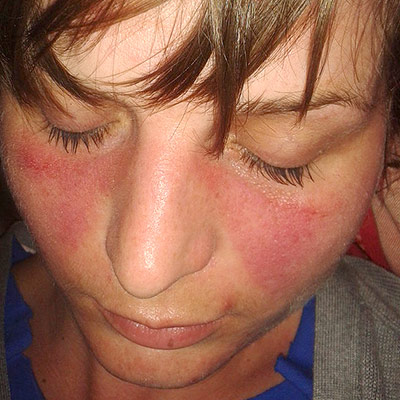Joseph R. Anticaglia MD
Medical Advisory Board
Just as an apartment building uses a doorman and a surveillance system to identify and prevent unwanted visitors from entering the premises, the immune system uses an army of specialized cells, tissues and organs to survey and protect the body against foreign invaders.
The immune system is composed of white blood cells which are manufactured in the bone marrow. Ideally, the immune system works to prevent harmful substances and microorganism (antigens) from entering the body. One way it achieves this is by employing the protective shield of the skin and mucous membranes found in the nose and other parts of the body.
If unwanted elements (e.g. viruses, bacteria, fungi) enter the body or if for some reason, enemies within the body become active (e.g. cancer cells), the immune system is activated to find the culprits, kill them and dispose of the remains.
It’s the job of special cells called lymphocytes — white blood cells — to seek and destroy the enemy. In addition, their job is also to remove dying, misshaped or dead cells from the body.
Cells of the immune system start out in the bone marrow. B cells (B lymphocytes) remain, develop and mature in the bone marrow. These cells differentiate into plasma cells, which in turn manufacture antibodies (immunoglobulins). They are the intelligence operation of the of the defense system.
B cells recognize the “face” of the enemy, locate the invader and relay the information to the immune system’s emergency response team. It keeps ‘mug shots’ — an up to date dossier on tens of millions of previous invaders. Its radar is constantly scanning the body for unwelcomed intruders.
Once foreign particles or microorganisms invade the body, B cells engage the enemy with antibodies and lock onto it. These cells send an urgent SOS signal to the command center requesting immediate help of the T cells.
T cells (T lymphocytes) also start out in the bone marrow, but leave the bone marrow and mature in the thymus, a gland behind the sternum-breastbone. Their job is to destroy harmful elements that enter the body. Both T and B cells circulate throughout the body 24/7.
The body’s defense system also has an array of troops under its command. Of particular interest are the phagocytes.
Phagocytes
After the B and T cells complete their job of identifying and destroying foreign invaders, the body needs a way to clean up the mess they left behind. It also needs a mechanism to dispose of malformed, dying or dead cells.
Phagocytes are in charge of waste management. They get signals to engulf, ingest and eliminate unwanted material (bacteria, foreign particles viruses, dead or dying cells) from the body.
However, at times, the body’s intelligence system fails. The result, instead of attacking the enemy, the body attacks itself!
Self and Others
A healthy immune system attacks the enemy, not itself. When the defense system is not working properly, its soldiers wind up destroying its own tissues and organs (self). These self-inflicted casualties come under the umbrella of autoimmune diseases. A few examples are: rheumatoid arthritis, type 1diabetes, multiple sclerosis and lupus erythematous.
Lupus is a chronic, generalized autoimmune disease that can affect the skin, joint heart and lungs. It can also affect the blood cells, kidneys and lungs. The most distinctive sign of lupus is a facial rash.

Lupus: Note typical “butterfly rash”
In short, the body uses lymphocytes, lymph nodes and lymph organs with its many components to ward off enemies and safeguard our well-being:
- Lymphocytes
- B Lymphocytes (B cells)
- T lymphocytes (T Cells)
- Phagocytes
- Lymph organs
Lymph Organs are home to lymphocytes and their defense capabilities. The organs are positioned throughout the body. The lymphocytes “leave home” and circulate throughout the body searching for undesirable intruders, ready to come to our defense when needed.

Thymus: T cells Bone marrow: B cells.
Whether you’re pushing a cart in a grocery store, riding on a bus or walking barefoot at home, you’re constantly being exposed to germs. A healthy immune system is the best defense against illness.
Glossary
The complement system is part of the immune system that enhances (complements) the ability of antibodies and phagocytic cells to do their job.
Disorders of the Immune include:
Allergy and asthma
Autoimmune diseases
Immune deficiency diseases
Cytokines are proteins that are produced in response to foreign invaders. It’s part of the communication network of the immune system.
References
National Center for Biology Information; NIH; Components of the Immune System; 2001
NIH; Immune System Research; July 16, 2016
Campbell, Andrew W; Autoimmunity and the Gut; Autoimmune Disease; May 13 2014
NIH; Overview of the Immune System; Dec 30, 2013
This article is intended solely as a learning experience. Please consult your physician for diagnostic and treatment options.

